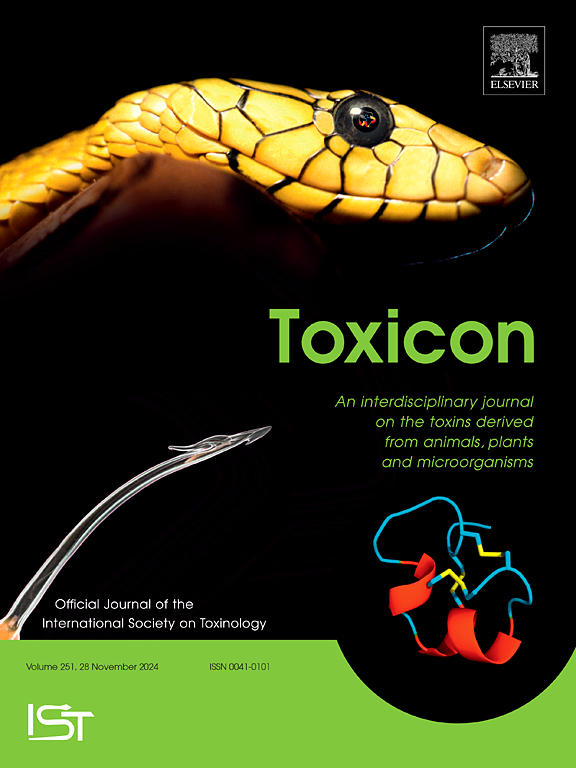LCA, a bacterial metabolite, induces ferroptosis and senescence in triple-negative breast cancer
IF 2.6
4区 医学
Q2 PHARMACOLOGY & PHARMACY
引用次数: 0
Abstract
Lithocholic Acid (LCA) is a secondary bile acid generated through the microbial metabolism of primary bile acids in the gut. In recent years, it has been found to have potential anti-tumor effects. Triple-negative breast cancer (TNBC) is the most aggressive breast cancer subtype, characterized by the absence of estrogen receptor, progesterone receptor, and HER2 expression. Chemotherapy remains the primary treatment, but it has significant side effects and often leads to drug resistance. Therefore, exploring new treatment strategies is of great importance. This research seeks to elucidate the mechanism of LCA in TNBC and establish a theoretical foundation for its clinical use. Through cell proliferation assays, iron metabolism detection, oxidative stress analysis, ferroptosis marker detection, and autophagy-related experiments, we systematically investigated the effects of LCA on TNBC cells. The findings indicated that LCA effectively suppressed TNBC cell proliferation and triggered mitochondrial iron overload and oxidative stress, resulting in ferroptosis via ferritinophagy. Molecular mechanism studies revealed that after LCA treatment, the expression of ferroptosis-related markers GPX4 and FTH was downregulated, while NCOA4 expression was upregulated. Autophagy inhibitors or AMPK inhibitors significantly reversed LCA-induced ferroptosis, indicating that LCA induces ferroptosis by promoting ferritinophagy and releasing iron ions. This study elucidates the molecular mechanism by which LCA induces ferroptosis in TNBC cells via regulation of iron metabolism, oxidative stress, and autophagy. It provides crucial experimental evidence and theoretical support for LCA as a potential anti-breast cancer drug, offering novel insights and targets for TNBC treatment.
细菌代谢物LCA在三阴性乳腺癌中诱导铁下垂和衰老。
石胆酸(Lithocholic Acid, LCA)是一种次生胆汁酸,是由肠道内原胆汁酸的微生物代谢产生的。近年来,人们发现它具有潜在的抗肿瘤作用。三阴性乳腺癌(TNBC)是最具侵袭性的乳腺癌亚型,其特征是缺乏雌激素受体、孕激素受体和HER2的表达。化疗仍然是主要的治疗方法,但它有明显的副作用,并经常导致耐药性。因此,探索新的治疗策略具有重要意义。本研究旨在阐明LCA在TNBC中的作用机制,为其临床应用奠定理论基础。通过细胞增殖试验、铁代谢检测、氧化应激分析、铁凋亡标志物检测和自噬相关实验,系统研究了LCA对TNBC细胞的影响。结果表明,LCA可有效抑制TNBC细胞增殖,引发线粒体铁超载和氧化应激,通过铁蛋白吞噬导致铁凋亡。分子机制研究发现,LCA处理后,凋亡相关标志物GPX4和FTH表达下调,NCOA4表达上调。自噬抑制剂或AMPK抑制剂显著逆转LCA诱导的铁下垂,表明LCA通过促进铁蛋白自噬和释放铁离子诱导铁下垂。本研究阐明了LCA通过调控铁代谢、氧化应激和自噬诱导TNBC细胞铁凋亡的分子机制。这为LCA作为潜在的抗乳腺癌药物提供了重要的实验证据和理论支持,为TNBC治疗提供了新的见解和靶点。
本文章由计算机程序翻译,如有差异,请以英文原文为准。
求助全文
约1分钟内获得全文
求助全文
来源期刊

Toxicon
医学-毒理学
CiteScore
4.80
自引率
10.70%
发文量
358
审稿时长
68 days
期刊介绍:
Toxicon has an open access mirror Toxicon: X, sharing the same aims and scope, editorial team, submission system and rigorous peer review. An introductory offer Toxicon: X - full waiver of the Open Access fee.
Toxicon''s "aims and scope" are to publish:
-articles containing the results of original research on problems related to toxins derived from animals, plants and microorganisms
-papers on novel findings related to the chemical, pharmacological, toxicological, and immunological properties of natural toxins
-molecular biological studies of toxins and other genes from poisonous and venomous organisms that advance understanding of the role or function of toxins
-clinical observations on poisoning and envenoming where a new therapeutic principle has been proposed or a decidedly superior clinical result has been obtained.
-material on the use of toxins as tools in studying biological processes and material on subjects related to venom and antivenom problems.
-articles on the translational application of toxins, for example as drugs and insecticides
-epidemiological studies on envenoming or poisoning, so long as they highlight a previously unrecognised medical problem or provide insight into the prevention or medical treatment of envenoming or poisoning. Retrospective surveys of hospital records, especially those lacking species identification, will not be considered for publication. Properly designed prospective community-based surveys are strongly encouraged.
-articles describing well-known activities of venoms, such as antibacterial, anticancer, and analgesic activities of arachnid venoms, without any attempt to define the mechanism of action or purify the active component, will not be considered for publication in Toxicon.
-review articles on problems related to toxinology.
To encourage the exchange of ideas, sections of the journal may be devoted to Short Communications, Letters to the Editor and activities of the affiliated societies.
 求助内容:
求助内容: 应助结果提醒方式:
应助结果提醒方式:


